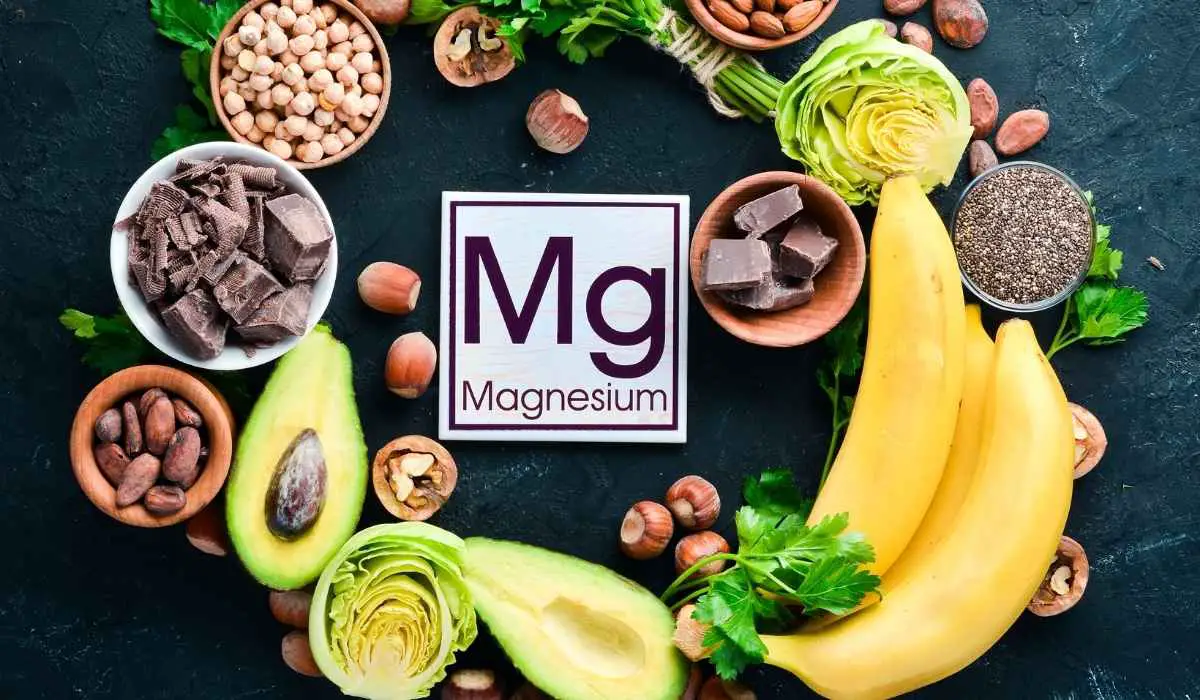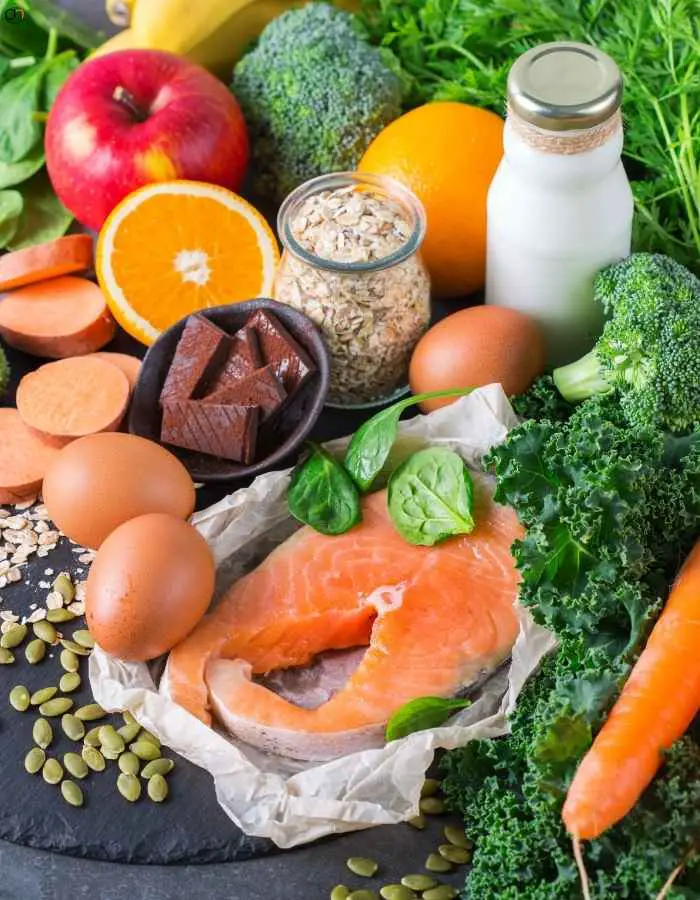Magnesium may not get as much attention as other nutrients, but it plays a vital role in keeping your body functioning at its best. From supporting muscle and nerve function to regulating blood sugar and boosting bone health, this essential mineral is involved in over 300 biochemical processes in the body.
Yet, many people don’t get enough magnesium from their diet. The good news? It’s easy to up your intake with the right foods. In this post, we’ll break down the top Foods High In Magnesium, highlight their health benefits, and give you simple ways to incorporate them into everyday meals—so you can feel energized, focused, and strong from the inside out.
Health Benefits of Magnesium:
Magnesium is a crucial mineral that your body relies on for a wide range of physiological functions. While it’s often overlooked, a magnesium-rich diet can significantly enhance your overall well-being. Here are some of the top health benefits:
1. Supports Muscle and Nerve Function
Magnesium helps regulate muscle contractions and ensures your nerves send and receive signals properly. Low levels can lead to cramps, spasms, or tingling sensations.
2. Boosts Energy Production
Your body needs magnesium to convert food into usable energy. Without it, you may feel tired, sluggish, or mentally foggy—especially under stress.
3. Promotes Better Sleep
Magnesium helps calm the nervous system by regulating neurotransmitters like GABA, which encourage relaxation and deeper sleep. It may also help with insomnia and sleep quality.
4. Supports Bone Health
About 60% of the body’s magnesium is stored in the bones, where it works alongside calcium and vitamin D to maintain bone density and strength.
5. Helps Regulate Blood Sugar Levels
Magnesium improves insulin sensitivity and glucose metabolism, making it especially important for people with diabetes or at risk of insulin resistance.
6. Maintains Healthy Heart Rhythm and Blood Pressure
Magnesium helps regulate heartbeats and supports relaxed blood vessels, which can contribute to lower blood pressure and reduced risk of cardiovascular disease.
7. Reduces Inflammation
Chronic low magnesium levels have been linked to increased inflammation, a driver of many diseases. Adequate intake may help reduce inflammatory markers in the body.
25 foods high in magnesium:
25 Foods High In Magnesium, including plant- and animal-based options, along with approximate magnesium content per serving:
Leafy Greens & Vegetables
-
Spinach (cooked, 1 cup) – ~157 mg
-
Swiss chard (cooked, 1 cup) – ~150 mg
-
Kale (cooked, 1 cup) – ~30 mg
-
Okra (cooked, 1 cup) – ~57 mg
-
Avocado (1 medium) – ~58 mg
Nuts & Seeds
-
Pumpkin seeds (1 oz) – ~168 mg
-
Almonds (1 oz) – ~80 mg
-
Cashews (1 oz) – ~74 mg
-
Chia seeds (1 oz) – ~95 mg
-
Flaxseeds (1 tbsp) – ~40 mg
Whole Grains & Legumes
-
Quinoa (cooked, 1 cup) – ~118 mg
-
Brown rice (cooked, 1 cup) – ~86 mg
-
Oats (cooked, 1 cup) – ~57 mg
-
Black beans (cooked, 1 cup) – ~120 mg
-
Lentils (cooked, 1 cup) – ~71 mg
-
Chickpeas (cooked, 1 cup) – ~79 mg
Fruits
-
Banana (1 medium) – ~32 mg
-
Dried figs (1/2 cup) – ~50 mg
-
Raisins (1/2 cup) – ~25 mg
-
Prunes (1/2 cup) – ~35 mg
Seafood & Animal-Based Sources
-
Salmon (cooked, 3 oz) – ~26 mg
-
Mackerel (cooked, 3 oz) – ~82 mg
-
Tuna (cooked, 3 oz) – ~50 mg
-
Plain yogurt (1 cup) – ~45 mg
Other Magnesium-Rich Favorites
-
Dark chocolate (1 oz, 70–85% cocoa) – ~64 mg
Magnesium to Your Diet:
Getting enough magnesium doesn’t have to mean overhauling your entire meal plan. With a few small changes and smart swaps, you can easily boost your magnesium intake and support your overall health. Here’s how:
1. Start with a Magnesium-Rich Breakfast
-
Add chia or flaxseeds to your oatmeal or smoothie
-
Use whole grains like oats or whole wheat toast instead of refined options
-
Enjoy a banana or a handful of almonds on the side
2. Build Magnesium Into Lunch and Dinner
-
Add a serving of spinach or Swiss chard to salads, soups, or stir-fries
-
Swap white rice for quinoa, brown rice, or whole grain pasta
-
Include legumes like black beans, lentils, or chickpeas in bowls, stews, or wraps
-
Include magnesium-rich seafood like mackerel or salmon once or twice a week
3. Snack Smart
-
Grab a handful of pumpkin seeds, cashews, or trail mix with dark chocolate chips
-
Snack on dried figs, raisins, or a small bowl of yogurt with flaxseeds
4. Make Smoothies Your Go-To
Blend a magnesium-rich smoothie with ingredients like:
-
Spinach
-
Avocado
-
Banana
-
Almond milk
-
Chia or flaxseeds
5. Cook Mindfully
-
Lightly steam vegetables instead of boiling to preserve minerals
-
Use magnesium-rich herbs and spices like basil, coriander, and cumin
6. Consider Supplements if Needed
If you’re not getting enough magnesium from food alone—especially if you have certain health conditions—talk to your doctor or dietitian about taking a magnesium supplement. Common forms include magnesium citrate, glycinate, or oxide.
Who Might Need Extra Magnesium?
While most people can get enough magnesium through a balanced diet, some individuals may need more than average due to lifestyle, age, or health factors. Here’s who might benefit from a magnesium boost:
1. People with Digestive Disorders
Conditions like Crohn’s disease, celiac disease, or chronic diarrhea can reduce magnesium absorption, leading to deficiencies.
2. Individuals with Type 2 Diabetes or Insulin Resistance
High blood sugar and frequent urination can cause magnesium loss. Magnesium also helps regulate blood glucose levels, making it vital for those with diabetes.
3. Older Adults
As we age, magnesium absorption decreases while excretion increases. Many older adults also take medications that deplete magnesium levels.
4. People Under Chronic Stress
Physical or emotional stress can deplete magnesium stores over time, impacting energy, mood, and muscle function.
5. Athletes and Active Individuals
Strenuous exercise increases magnesium needs due to higher loss through sweat and urine. Athletes may benefit from dietary magnesium to support recovery and prevent cramps.
6. Pregnant and Breastfeeding Women
During pregnancy and lactation, the body requires more magnesium to support both the mother and the growing baby. A magnesium-rich diet is essential during this time.
7. Heavy Alcohol Consumers
Excessive alcohol consumption can interfere with magnesium absorption and increase urinary excretion, leading to deficiencies.
If you fall into any of these groups, it’s worth speaking with a healthcare provider about your magnesium levels and how to meet your needs safely.
Key Take Away:
- Magnesium is an essential mineral that supports your muscles, nerves, heart, bones, energy levels, and more—yet many people don’t get enough.
- The good news? A variety of whole foods like leafy greens, nuts, seeds, whole grains, legumes, and even dark chocolate can help you meet your daily magnesium needs naturally.
- By making a few smart dietary choices each day, you can easily boost your intake and support long-term health.
Read Next: 25 Foods High In Magnesium
FAQs:
1. How much magnesium do I need daily?
Most adults need between 310–420 mg per day, depending on age and gender. Pregnant or breastfeeding individuals may need slightly more.
2. Can I get too much magnesium from food?
No—excess magnesium from food is typically excreted by the kidneys. However, too much from supplements can cause side effects like diarrhea, nausea, or cramping.
3. What are the signs of magnesium deficiency?
Symptoms may include fatigue, muscle cramps, irritability, poor sleep, numbness, or irregular heartbeat. A blood test can confirm deficiency.
4. Is it better to get magnesium from food or supplements?
Food is the best source, as it comes with other beneficial nutrients. Supplements can help if your levels are low or you have trouble absorbing magnesium.
5. What time of day should I take magnesium supplements (if needed)?
Many people prefer taking magnesium in the evening, as it may promote relaxation and improve sleep—but timing depends on your goals and your healthcare provider’s advice.



